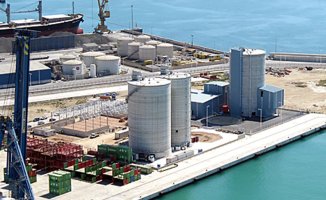Vicenç Pagès Jordà, one of the most prestigious contemporary Catalan authors, died prematurely last August at the age of 58. Long fascinated by the Kennedy dynasty, he left a posthumous essay devoted to analyzing his career and the historical impact he generated. Below we publish a fragment of the first chapter of ‘Kennedyana. The dynasty that created the perfect plot’ (in bookstores on November 14), which starts with a reflection from the cemetery where the assassinated North American president is buried.
I am at the grave of John Fitzgerald Kennedy in Arlington Cemetery. Next to her tombstone is that of Jacqueline and, on both sides, smaller, those of two children: Arabella, who died the same day she was born, in 1956, and Patrick, who lived for two days in 1963. Behind, in the center An eternal flame burns. A few yards to the left, at the foot of the hill itself, are two more headstones, under which John's brothers, Robert and Edward, are buried.
In the story titled Arlington, James Salter describes the cemetery: “Headstones in tight even lines curved down the slopes and down toward the river as far as the eye could see, all the same height with the occasional larger gray monolith , like a mounted officer among the troops”.
Since Arlington is part of the state of Virginia, I was surprised that it was so close to Washington. The day before he had visited the Lincoln Memorial. After paying tribute to the president who abolished slavery, I walked around the outside of the building and from the back I saw the thousands of tombstones across the Potomac River that separates the two states. In this area, power is so concentrated that the president's tomb is located just a couple of kilometers from the headquarters of the Pentagon, the FBI and the CIA. In a few minutes, you can walk to the Georgetown neighborhood, to which Jackie Kennedy moved in 1963, when she became a widow, not far from the White House and the church where the president's funeral was held. Everything is very close. The funeral procession moved from Congress to the White House, and from there to St. Matthew's Cathedral. It is likely that the director of the FBI saw her pass from the window of his office on Pennsylvania Avenue, as shown in the film J. Edgar (2011).
If someone asks me when I started writing this book, I could answer that it was that summer of 2014 at the Kennedy gravesites. But it would not be entirely true. This family has attracted me since childhood. The objective of this book is to transmit a fascination that over the years has been expanding and cementing.
Like that of any powerful person, John Fitzgerald Kennedy's life was peculiar, but what made him an icon known throughout the planet was his death. Although he is not the only president of the United States who has been assassinated, no other has been shot by a rifle in the middle of the street in broad daylight. More importantly, we have all seen the images of the assassination. We are not sure if the scene strikes us because it has a cinematographic air or, conversely, if it has influenced subsequent audiovisual fictions. Be that as it may, that attack is at the origin of today's world, and also in the stories with which we try to understand it.
As is often the case in detective novels, the victim amassed enemies, most influential enough to conceal evidence of their involvement. Let's review them. The military was dissatisfied with the limitations that the president had placed on the defense budget; FBI Director Edgar Hoover had hated the Kennedy family for decades; the USSR had not forgotten the humiliation it had suffered a year earlier with the Cuban missile crisis; the anti-Castroists and the CIA did not forgive JFK for the failure of the Bay of Pigs invasion (nor did Fidel Castro forgive him for authorizing it); the Vietcong had reasons to take revenge for the recent coup in Saigon; mobsters hated the family because Attorney General Robert Kennedy persecuted them relentlessly; the steel and oil industrialists felt mistreated; the racists of the Ku Klux Klan and the John Birch Society thought that JFK was too generous with ethnic minorities; Malcolm X and his followers considered him a racist.
Apart from those who hated the president, who were legion, the suspects increase if we ask who benefited from his death. The answer should include the vice president, Lyndon Johnson, who succeeded him and was elected to the next term.
We could also add Aristotle Onassis, who after the assassination had free access to the widow, with whom he had shared a cruise that same summer. In contrast to all these suspects and beneficiaries, who wielded high logistical and executive power - including the secret services of several states - the official culprit in the assassination was Lee Harvey Oswald, a warehouse boy who shot the president with a rifle he I had bought by mail. With these contradictions alone, the least gifted writer would have material for a five-season series.
The Dallas attack not only resets the previous events, but also transforms the future of the Kennedy family and, incidentally, that of all of us. The pattern is consolidated five years later with the shooting assassination of Robert Kennedy, when he was about to become president of the country. A few weeks later, the marriage between Jackie and Onassis, then one of the richest men in the world, takes place. In a short time, we went from fairy tale to tragedy, from tragedy to vaudeville and from there to drama and comedy, and back again.













